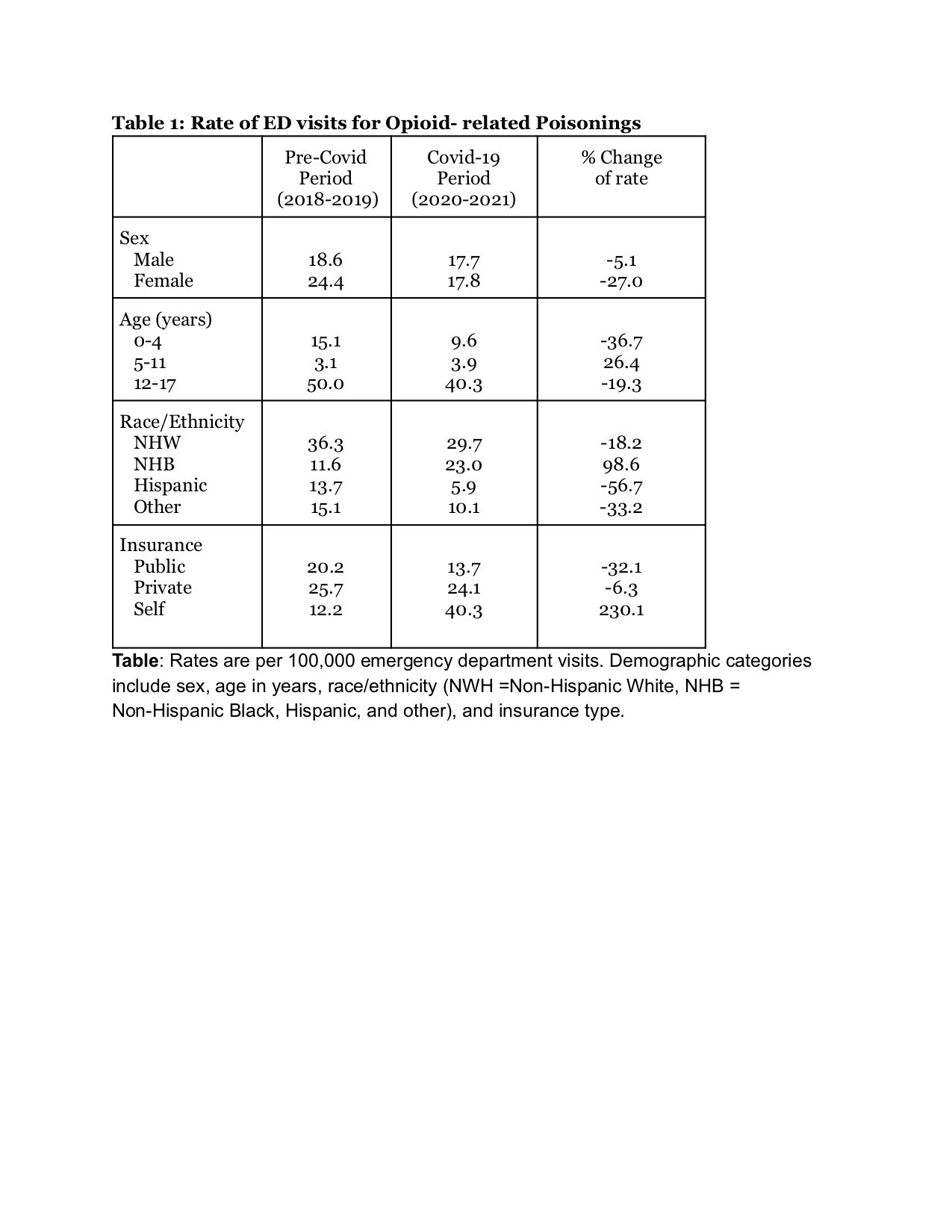Injury Prevention
Injury Prevention 2
325 - The Prevalence of Opioid Poisonings in Children of Connecticut
Monday, May 1, 2023
9:30 AM - 11:30 AM ET
Poster Number: 325
Publication Number: 325.42
Publication Number: 325.42
Susana D. Collazo, Connecticut Children's Medical Center, Camden, NJ, United States; Anoush Calikyan, Frank H. Netter MD School of Medicine at Quinnipiac University, New Haven, CT, United States; Amy Hunter, University of Connecticut School of Medicine, Farmington, CT, United States; Mary-Kate Nowobilski, Connecticut Children’s, Hartford, CT, United States; Sharon Smith, UConn/CT Children's, Canton, CT, United States

Susana D. Collazo, MD (she/her/hers)
Pediatric Emergency Medicine Fellow
Connecticut Children's Medical Center
Camden, New Jersey, United States
Presenting Author(s)
Background: Pediatric poisonings can be serious and life threatening. Opioids are one of the most common substances involved in US poisonings with increasing trends in fentanyl-related morbidity and mortality. The COVID-19 pandemic compromised school attendance and parental supervision which may have impacted opiate ingestions.
Objective: To determine the prevalence of pediatric opioid poisonings in Connecticut and to compare the rates before and during the COVID-19 pandemic period including fentanyl poisonings.
Design/Methods: This is a retrospective study using emergency department (ED) discharge records from 2018-2021 involving children aged birth-17 years captured in the Connecticut Injury Surveillance System. International Classification of Diseases, 10th Revision, Clinical Modification (ICD-10-CM) codes were used to identify ED discharges involving opioids (T40.2, F11) and fentanyl (T40.4). Children’s age, sex, race/ethnicity, insurance status, and opioid and/or fentanyl status were compared by pre-COVID-19 (2018-2019) and COVID-19 (2020-2021) periods. Rates were calculated per 100,000 ED visits.
Results: There were 867,162 ED discharges among Connecticut children during the study period, 517,979 in the pre-COVID-19 period and 349,183 during COVID-19 period. Fewer than 1% involved opioids (N=174; pre 126, COVID 67) and fentanyl (N=19; pre 14, COVID 5) poisonings. The mean age for children with opioid poisoning was 16 years in both study periods, while mean age for fentanyl poisonings was 2 years pre-COVID-19 and 14 years in COVID-19 period, p< 0.01. No ED discharges were coded for both opioid poisoning and fentanyl poisonings. The rate of opioid poisonings from pre-COVID-19 to COVID-19 period decreased by 17.9% from 21.6/100,000 to 17.8/100,000 visits, and the rate of fentanyl poisonings decreased by 47% from 2.7/100,000 to 1.4/100,000. The overall rate of opioid poisonings was higher among children of non-Hispanic White race during both periods. There was a 98.6% increase in the rate of opioid poisonings in non-Hispanic Black patients from pre-COVID-19 to COVID-19 period while the rate decreased for all other groups. Number of opioid poisonings were similar in female and male patients.
Conclusion(s): The prevalence of opioid related poisonings in pediatric patients in Connecticut decreased during the first 2 years of the COVID-19 pandemic. Decreased availability of opiates in the school and community may have influenced this decline. Fentanyl poisonings were not frequent in this database. These poisonings may not have been identified or coded during initial ED visits.

